Over the years, vermicelli from the traditional red arrowroot plant of Ban Xeo, Lao Cai province has helped the ethnic people here earn more income, escape poverty, and get rich right on their homeland.
Turning native crops into key crops, Ban Xeo people and cooperatives have increasingly improved production capacity, contributing to bringing dong vermicelli products far and wide, becoming the pride of Lao Cai agricultural products, affirming its position on the map of Vietnamese specialties.
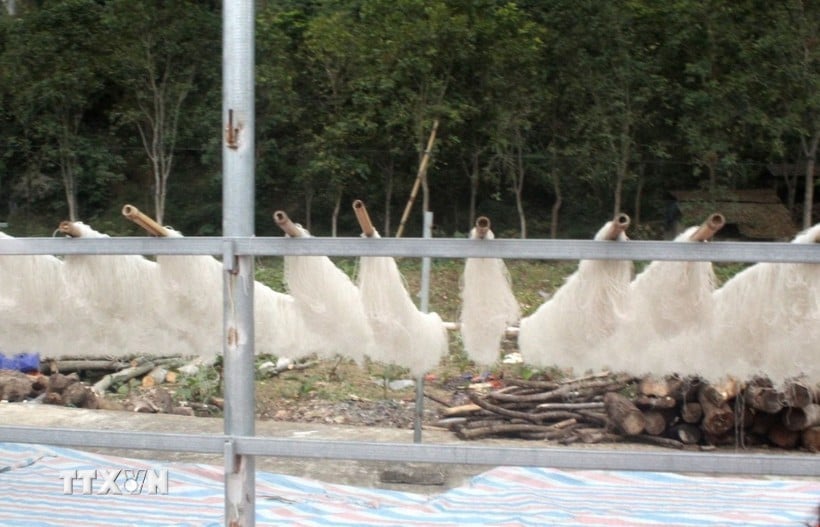
Drying cassava vermicelli.
Native trees help alleviate poverty.
In late October, farmers in Ban Xeo commune are preparing to harvest arrowroot. On the hillsides, along the inter-village and inter-commune roads, green arrowroot gardens can be seen everywhere.
The clumps of arrowroot plants taller than a person are blooming with bright red flowers, signaling a bountiful harvest. Unlike the high-yield arrowroot variety, in addition to being used as a food crop, red arrowroot is also known as an effective medicinal herb.
According to the elders in Ban Xeo, since ancient times, the root of the red arrowroot plant has been used a lot in medicinal remedies. This root has a sweet taste, is cool, helps to cool down, calms the nerves effectively, and has many useful uses in treating liver and kidney diseases.
Thanks to its outstanding health benefits and the preservation of its traditional, fresh, and special flavor, over the years, Ban Xeo products have been consumed strongly in the market, always in a state of supply not meeting demand.
The cassava fields of Mr. Tan Dung Thien's family, Chief of San Lung village, are a few kilometers from home. Some fields are located right next to the main road, while others are located high up on the hill.
Mr. Sieu said that for generations, his family and villagers only planted a few plots to make vermicelli and prepare dishes for the family, and rarely sold them. But when they grasped the market demand and were encouraged by the government, his family and villagers expanded the area, earning more sustainable income from traditional products.
Mr. Thien added that red cassava is an easy-to-grow plant with few pests and diseases, low care costs, and is especially suitable for the natural conditions of Ban Xeo.
With an average yield of 25-30 tons/ha, growers can earn from 62.5-75 million VND/ha thanks to the selling price of fresh tubers ranging from 2,500-3,000 VND/kg.
The whole village currently has 124 households, of which 70 households participate in growing cassava with an area of over 30 hectares. This is the main source of income for people to improve their lives.
Mr. Ly Lao Ta's family in San Lung village used to have 1 hectare of land mainly used to grow corn for low income. In recent years, realizing the potential and effectiveness of arrowroot, his family has boldly converted.
With favorable climate and technical guidance, every year his family harvests more than 20 tons of fresh cassava tubers, and after deducting expenses, earns nearly 50 million VND.
Mr. Ta said that it is estimated that each hectare of galangal gives an average income 2-3 times higher than corn or upland rice, helping his family reduce difficulties.
Recently, his family received 60 million VND from the State to help remove the temporary house. Together with the money saved from growing arrowroot, his family's dream house has become a reality.
Ban Xeo Commune was established on the basis of merging 3 communes of Ban Xeo, Muong Vi, Pa Cheo (old Bat Xat district); currently has 7,338 people, mainly Dao, Mong, Giay ethnic groups... including more than 1,000 poor and near-poor households.
By 2025, the whole commune will have nearly 100 hectares of cassava, with an estimated tuber output of more than 2,500 tons. Thanks to the stable development of raw material areas, the vermicelli making profession has helped hundreds of households escape poverty.
In particular, not only forming a concentrated raw material area, the bright spot in the development of cellophane noodles in Bat Xat is the closed production chain from raw material growing area to product consumption.
Forming a closed value chain
The ethnic minorities in Ban Xeo not only grow cassava to provide raw materials for cooperatives and processing facilities inside and outside the locality, but also participate in production, creating a closed value chain from growing areas to processing and consumption.
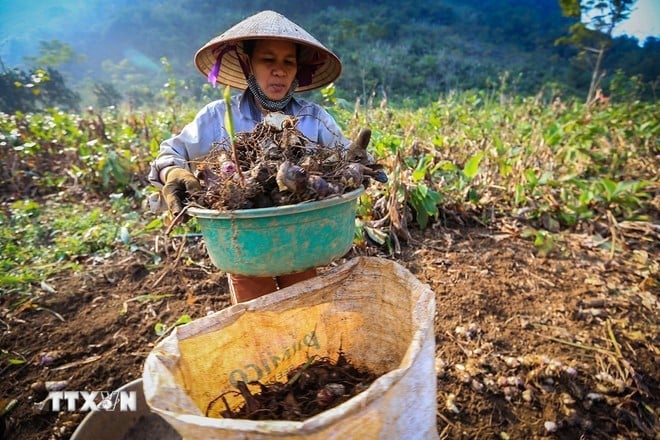
Harvesting ginger rhizomes. (Source: VNA)
People can confidently invest in fertilizers, expand the area, and take care of it according to the process to increase income. Born and raised in a family with 3 generations of traditional vermicelli making, in a place with vast fields of red cassava, Ms. Co Thi Hien, Director of Hung Hien Vermicelli Cooperative, always tries to keep her family's profession from fading away by keeping the most natural flavor of red cassava in each product.
The cooperative uses local raw materials and takes full advantage of the traditional manual production process to make vermicelli. Red arrowroot is collected and processed meticulously to produce batches of pure starch; then it is manually coated and dried in the sun.
Therefore, Hung Hien cellophane noodles always retain the chewy, crunchy texture and sweetness of old noodles. When cooked, the noodles are clear, chewy and do not break even if cooked many times.
She said the cooperative currently has 10 local workers directly involved in production at the facility, along with dozens of households participating in the association of growing arrowroot. On average, each day, her facility produces about 200 kg of dried vermicelli, equivalent to about 5.5 tons of fresh tubers. With the current output, supply cannot meet demand, so the cooperative buys all the output of the people as soon as they harvest.
Since joining forces to produce raw materials for vermicelli, Cu A Vang’s family in Ta Leng village has always been given advance supplies of cassava tubers. It is expected that by the end of this year, his family will harvest about 10 tons of tubers.
With a purchase price ranging from 2,500-3,000 VND/kg, Mr. Vang earns about 27 million VND. Mr. Cu A Vang said: "Since 2017, my family has been growing cassava to sell to Ms. Hien. We sold everything with little care."
In particular, to renew and increase the nutritional value of traditional dong vermicelli, Ms. Hien's production facility is the first to innovate, using ginseng, another precious medicinal herb of the highlands of Lao Cai, to create a unique ginseng vermicelli product.
The ginseng vermicelli is produced from 60% red arrowroot starch and 40% ground ginseng root, resulting in a dark yellow, chewy, delicious, refreshing ginseng vermicelli product, suitable for diabetics or people on a diet. These two tubers are grown completely organically, providing input materials for large-scale production, diversifying local staple agricultural products.
In addition to Hung Hien Vermicelli Cooperative, in the locality there is also Thanh Son Vermicelli Cooperative and a number of establishments participating in processing vermicelli, developing it into OCOP products (One Commune One Product program), contributing to job creation and creating stable income for hundreds of workers.
Ban Xeo strives to reduce the poverty rate to 9.5-10% by 2030. Mr. Ngo Quoc Cuong, Standing Deputy Secretary of the Commune Party Committee, affirmed that Ban Xeo has identified cassava as a key crop in the agricultural economic structure. The commune's goal is to form a concentrated production area with a consumption link, making cassava a specialty product with the Ban Xeo brand.
"Given the current situation of raw material areas not being able to fully meet production and supply needs to the market, in the coming time, the locality will expand the area of growing cassava by 40 hectares in Cua Cai and Na Din villages; at the same time, arrange staff to guide people in planting and caring for it according to the correct techniques, contributing to increasing productivity as well as income from this plant," said Mr. Ngo Quoc Cuong./.
vietnamplus.vn
Source: https://baolaocai.vn/chuyen-giam-ngheo-tu-dac-san-mien-ban-xeo-o-tinh-lao-cai-post885101.html








![Advance Information: [Lesson 1] Grasp information to master the season](https://vphoto.vietnam.vn/thumb/402x226/vietnam/resource/IMAGE/2025/12/10/1765332826736_dsc06522-210030_916-091151.jpeg)

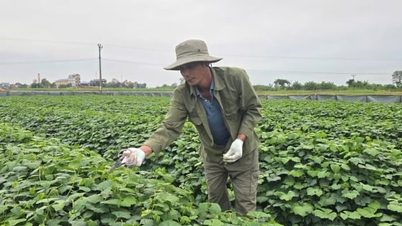

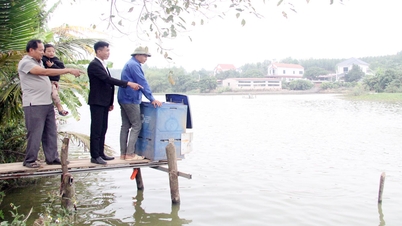

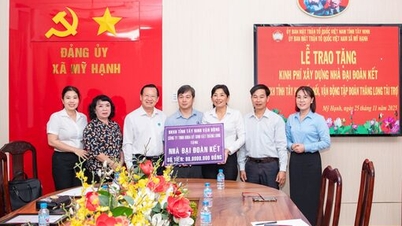



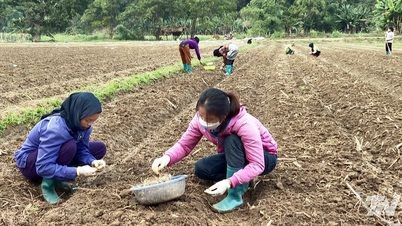



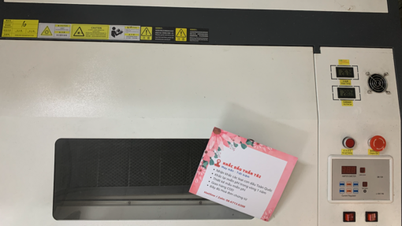
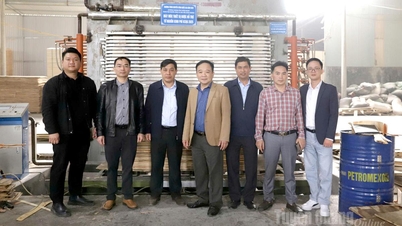

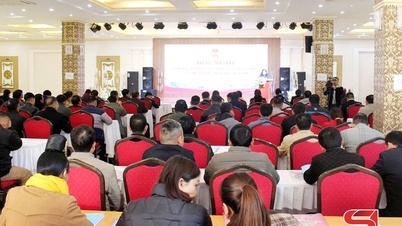

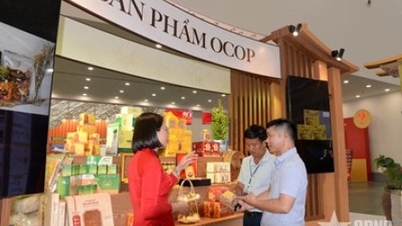







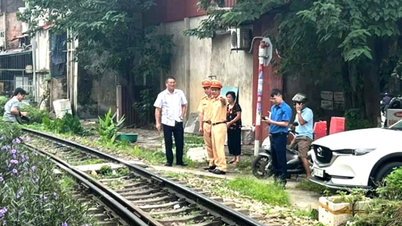

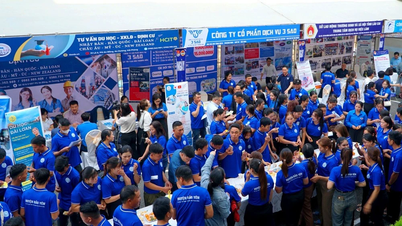

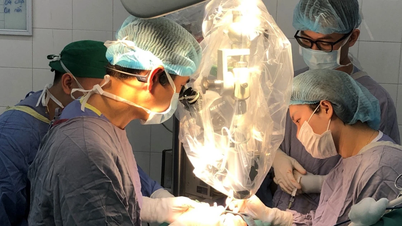









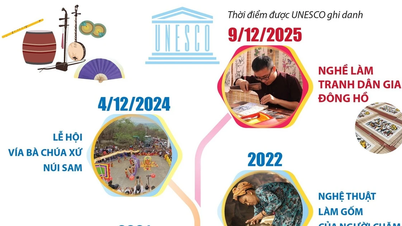

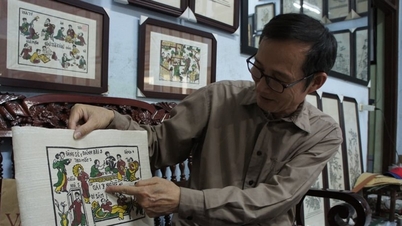



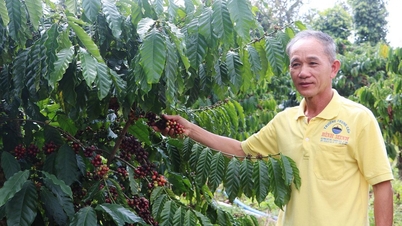

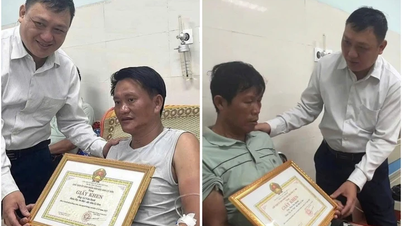

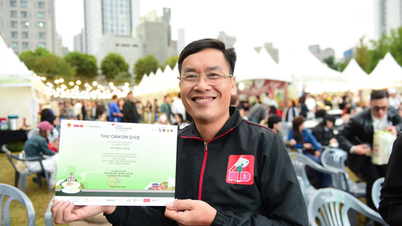

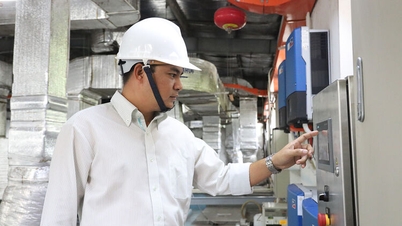




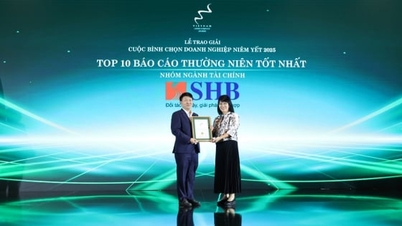




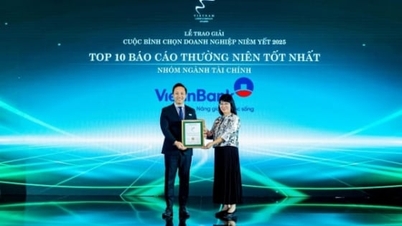












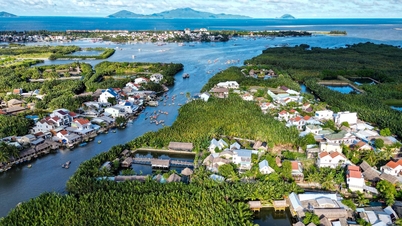
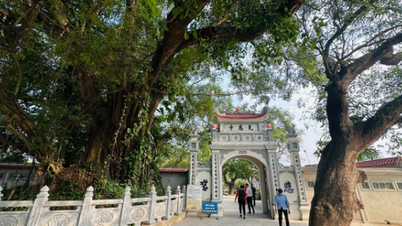








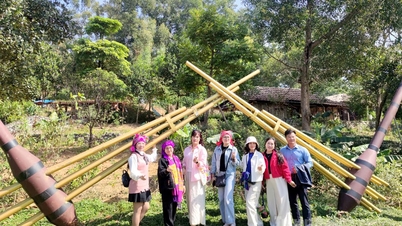
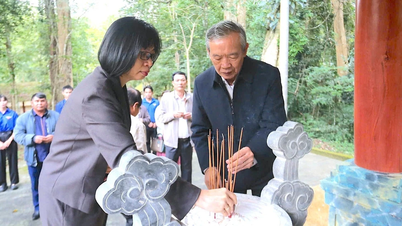

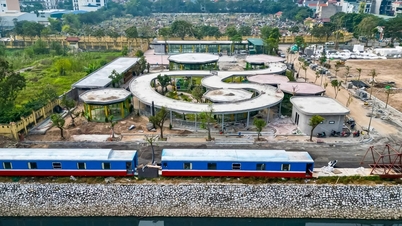

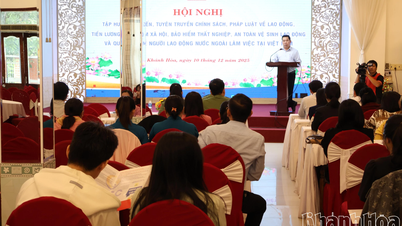

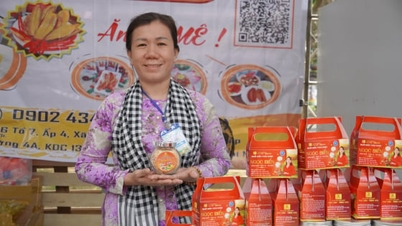











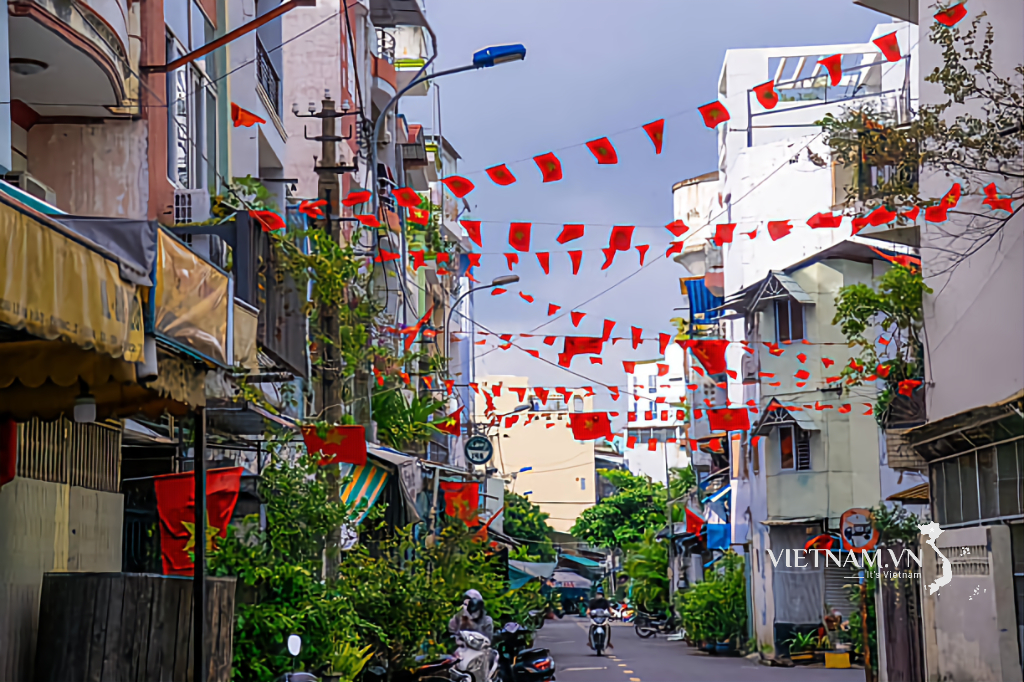




Comment (0)